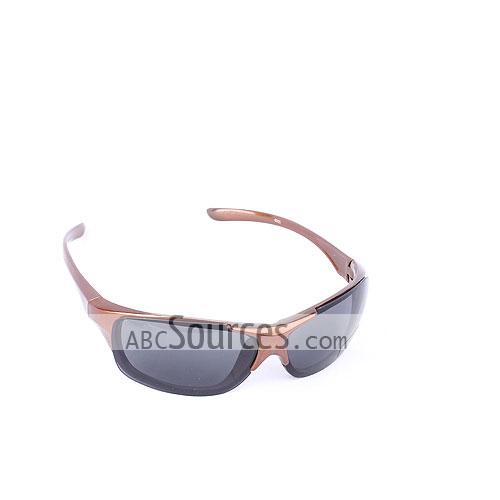How to Pick Good Sunglasses
May 14,2013
From: ABC sources
-
Sunglasses can give you instant James Dean cool, Audrey Hepburn glamour, or the rock star hipness of Bono. But they are much more than a fashion accessory.
\r\nSunglasses are an essential tool in safeguarding the health of your eyes and the surrounding tissue.\r\nHere's what you need to know about what sunglasses can do for you (apart from style) and how to choose them.\r\n\r\n\r\n \r\nPicking Sunglasses for Protection\r\n\r\n1 Protect your eyes! Excessive exposure to UV radiation can cause a variety of problems for your eyes such as cataracts, burns, and cancer.\r\n\r\n2 If you want your sunglasses to protect you from these risks, look for pairs that block at least 99% of UVB rays and at least 95% of UVA rays.\r\n\r\n3 Don't buy sunglasses if they're labeled as "cosmetic" or don't provide any information on UV protection.\r\n\r\nDeciding on a Style\r\n\r\nSunglasses come in all shapes and sizes! Here are a few popular styles:\r\n\r\n
\r\nPicking Sunglasses for Protection\r\n\r\n1 Protect your eyes! Excessive exposure to UV radiation can cause a variety of problems for your eyes such as cataracts, burns, and cancer.\r\n\r\n2 If you want your sunglasses to protect you from these risks, look for pairs that block at least 99% of UVB rays and at least 95% of UVA rays.\r\n\r\n3 Don't buy sunglasses if they're labeled as "cosmetic" or don't provide any information on UV protection.\r\n\r\nDeciding on a Style\r\n\r\nSunglasses come in all shapes and sizes! Here are a few popular styles:\r\n\r\n- \r\n
- Mirrorshades - Mirrored coating on surface. Used a lot by police officers in the US. They usually come in an aviator or wraparound shape. \r\n
- Aviators - Teardrop-shaped lens and thin metal frames. Often used by pilots, military personnel, and law enforcement personnel in the US. Good with any face shape, but best with an oval shape. \r\n
- Wayfarers/Spicolis - Popular in the 1950s and 1960s. Worn by Audrey Hepburn in the 1961 movie Breakfast at Tiffany's. \r\n
- Teashades - Popularized by John Lennon and Ozzy Osbourne. They're not very effective at keeping light out of your eyes, though. \r\n
- Wraparounds - Associated with athletics and extreme sports. \r\n
- Oversized - Associated with models and movie stars. Glamorous, darling. \r\n
Make sure the sunglasses fit properly. Try them on and make sure they don't pinch around your head. The weight should be evenly distributed between your ears and nose, and your eyelashes shouldn't touch the frame or lenses.\r\n\r\nChoosing Lens Color Wisely\r\n\r\nThe color of the lenses doesn't just affect your fashion statement, it affects how well you detect contrast and differentiate colors. Some colors enhance contrast, which can be useful; however, this is often at the expense of color distinction, which can cause problems (when you're driving, for example, and need to be able to clearly differentiate the colors of a traffic light). Some sunglasses even come with interchangeable lenses so you can change the color easily, depending on what you're doing.\r\n\r\nSelecting the Right Lens Material\r\n\r\n- \r\n
- Glass is heavier, expensive, and will "spider" if broken. \r\n
- Polycarbonate is not as scratch-resistant and provides less optical clarity than NXT polyurethane or glass, but it's more affordable. \r\n
- Acrylic is also affordable, but it's the least durable and optically clear. \r\n
Related Articles
